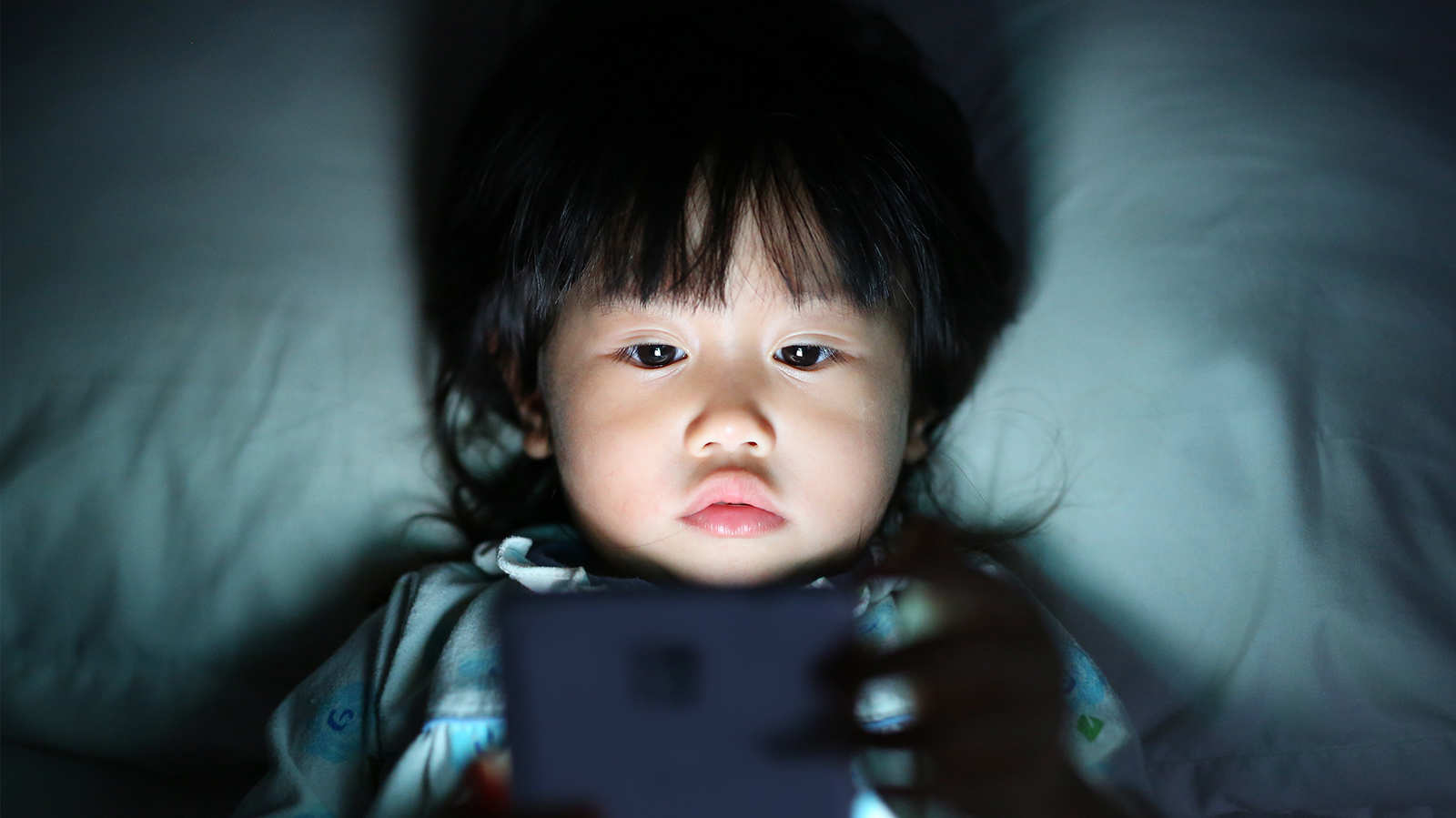I was 13 and over the moon when my parents gave me my first mobile phone.
It was a Nokia N95, and compared to today’s iPhone X or Samsung S9, it doesn’t seem like much. But back then, in 2008, the iPhone wasn’t sold in Singapore yet, so my phone seemed like the coolest gadget ever. I remember obsessively playing Bounce, the game that required you to manoeuvre a bouncing ball through mazes avoiding spikes and obstacles along the way. I also remember texting under the table in class – back then mobile phones had keypads and you could craft an entire text message without looking at your phone – and sending MP3 songs over bluetooth. That was also when Friendster and MySpace were all the rage and Apologize by Timbaland played on repeat over the radio, often accompanied by my very own heartfelt rendition.
Other stories you might like






Things seemed a lot simpler then: we read our news in print, enjoyed our entertainment on television, and chatted over the phone.
My parents were also not too worried about my online activities, and I attribute this to their unfamiliarity with the Internet at that time. But things were pretty mundane, too: Facebook was still very new, YouTube wasn’t yet populated by the billions of videos available today, and Instagram would only see its advent in two years.
Related article: Can a 19-year-old survive life without a smartphone?

Just a decade from my first mobile phone and parents today are living in a different world, digitally: their children are spoilt for choice, be it in the form of mobile games or Netflix series, and technology is evolving and advancing faster than ever. There are countless digital applications that allow for instant messaging, entertainment and games, and every application, website and social media site is clamouring for our attention. We have reached an era where it is possible to do anything and everything on digital devices: booking a ride, buying groceries, and making payment at restaurants. Everything can be done with our phones.
A recent BBC article detailed the media habits of children aged five to 16 in the United Kingdom and found that children prefer watching videos on devices to watching them on traditional television. The widely-shared article also mentioned that children are welcoming voice-automated devices such as Amazon’s Alexa and Apple’s Siri, creating the fear that they will become accustomed to saying and doing whatever they want to a digital assistant and forgoing social etiquette when interacting with people.
Related article: Here is why you may want to give up on social media
I have often witnessed where children demand for iPad time without so much as a “please” or “thank you”. I was at Plaza Singapura for dinner just recently and a family of four with two children was having dinner next to me. When their meal was served, the older of the two demanded: “Mummy, iPad.” And before his mother could respond, he had already reached into her bag to take it himself. The tone he used was almost disrespectful, and he and his younger brother spent the rest of the meal time with their eyes glued to their screens.

So, how are Singaporean parents coping with the infiltration of technology into their daily lives and by extension, their children’s?
I had a chat with a young parent whose child I had the opportunity to observe, by speaking to my cousin Ryan Cheah, to find out how he and his wife, Carol Chin, manage their daughter’s exposure and interaction with digital devices.
During the recent Chinese New Year, Kara, who will be turning four this year, was quietly watching other children play their mobile games or watching cartoons on their parents’ tablets. Unlike other children, she was not vying for a turn on the tablet, or negotiating with her parents for smartphone time. Rather, she was having a very earnest and animated conversation with her nine-year-old uncle about their favourite animals.
Limited access to digital devices before a certain age
Ryan, a banker, says that he and Carol, an export manager, are firm about limiting Kara’s exposure to digital devices.
“But, since it would be impossible for her to have zero exposure to them due to the spillover effect from others around her, it helps that we don’t allow Kara any access to our mobiles and tablets until she turns six, when we will progressively introduce digital devices to her,” the 33-year-old says.
He further explains that this is because Kara will need to handle technology once she goes into Primary One, and it will be useful to her.

However, he does acknowledge that digital devices work like a charm when parenting gets tough and, and giving the child a device to keep her quiet is a tempting option. Indeed, the visual graphics of YouTube videos are great for holding the attention of children who are otherwise easily bored. The key, he offers, is to be directly involved in your child’s activities and that means having to sacrifice “me-time” to engage them in other activities.
“What kids need most at this age is their parents’ time and their love,” Ryan emphasises.
Not a bad thing to have a tech-savvy kid
Another parent The Pride spoke to takes a different approach. Bryan Chen views technology as a viable tool that he wishes his four-year-old son, Kayden, to possess and believes it is important to start his child young to be tech-savvy in future.
“For Kayden to be able to code in future, he would first need to pick up the basic functions such as dragging, dropping, and swiping. After all, cyber knowledge has to start somewhere,” the accountant points out.
Spend time on other activities that are more meaningful than screen time
Bryan and his wife Sophia Soo, who is a journalist, are however mindful in instilling in Kayden that there are other valuable things one can do that are more meaningful than spending time playing mobile games or watching cartoons. For example, they take Kayden to libraries on weekends and spend quality time with him whenever they can, such that he prefers time with daddy and mummy more than playing Angry Birds.

Related article: What happens when long-lost neighbours reconnect after 50 years?
Curate and filter the content your child is exposed to
How does Bryan, 36, deal with the questionable and disturbing content that has been infiltrating children’s cartoon shows?
“This is where parents need to curate the content that their children watch on YouTube and choose channels that are reliable such as Cbeebies, a BBC television network,” says Bryan. “It would be even better if the parents could watch the shows with their children.”
But he also understands that there are days when there is simply too much on your plate and he suggests read-aloud books as a tool to keep your child occupied while you go about your tasks.

“Sometimes, when I am busy at home with work or household chores, I sit Kayden down with a read-aloud book so that I can hear what he is reading even while I am not physically next to him. I may be doing my own things but I have my ears on Kayden’s activities,” Bryan says.
Such books are more reliable in the sense that the audio is guaranteed to follow the plot and parents need not worry about any unpleasant surprises relating to the storyline, unlike videos.
The digital pacifier is a short-term solution that worsens a long-term problem
However, Bryan also agrees that this would mean that parents need to sacrifice their time and put in even more effort to ensure their children are benefiting from online entertainment, and he echoes Ryan’s sentiment that it can be tempting to leave your children to be entertained by digital devices while you go about your tasks.
This is tough as, after all, parenting is a full-time job with no vacation or sick days. The modern-day pacifier is the tablet and more often than not, a fussing child is immediately calmed when handed one. It can be especially challenging to stick to your guns when your child is wailing and demanding for iPad time at a mall and creating a ruckus, and passers-by can be unnecessarily harsh in their judgment of parents. It can be even worse if you have more than one child.
Being purposeful is key to managing your child’s exposure to technology
Despite the different approaches Ryan and Bryan adopt, they have one thing in common: Everything they do to manage their children’s exposure to the digital world is a properly-considered decision. Nothing is random. Rather than mindlessly going with the flow by capitulating to their children’s demands or denying them for the sake of it, every granted or forbidden interaction is a calculated decision that has their children’s best interest at heart.

It’s hard to say which way is better. What matters is that the child will grow up to be better at using technology as a tool without being enslaved to it and more appreciative of the time spent away from the screen.
“What helps when your child really wants screen time is to play a game of give and take. If he really is persistent, we tell him that he can watch but we will define the limits, such as 10 minutes, or one episode of his cartoon,” advises Bryan.
The benefit of this is that the parent is still in control in the negotiation process and it beats having a wailing child.
There is no running away from technology in this day and age. But it is the people who are mindful in their digital activity who stand to benefit from technology the most.
“A child, just like an adult, needs to see technology as but a tool, a means to an end. If it becomes the end rather than the means then that is enslaving oneself to it,” concludes Bryan.
Like fire, the digital device is an excellent servant, but a very bad master.
